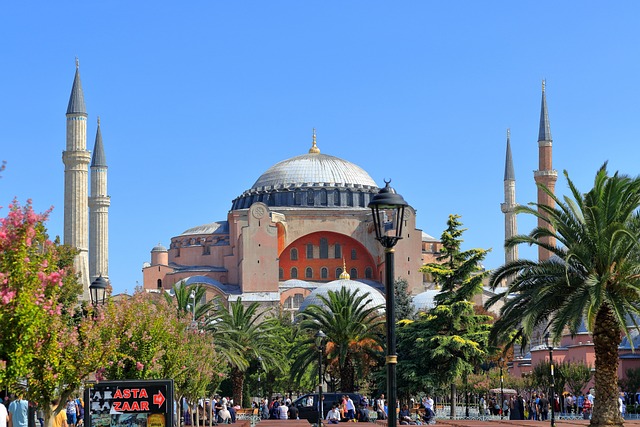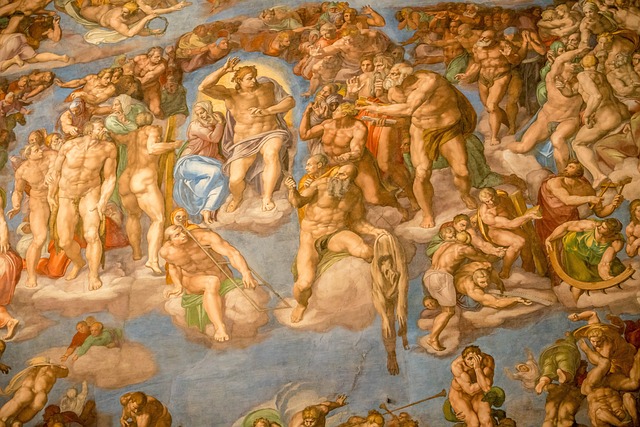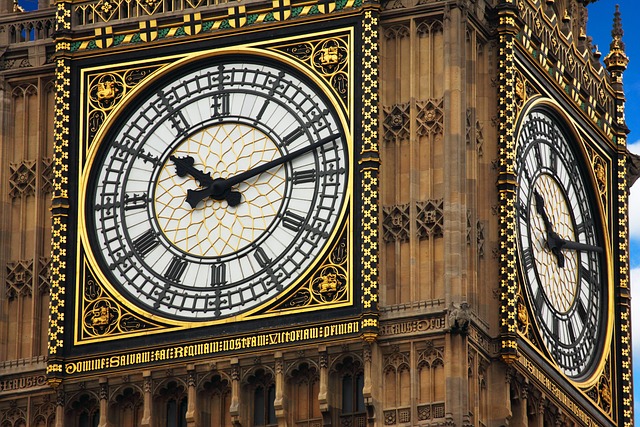Ancient Greek architecture has stood the test of time and continues to inspire modern day structures. One such remarkable example is the Temple of Artemis, dedicated to the Greek goddess of hunting, wild animals, and childbirth.
In this article, we will take a journey through history and explore the origins, architecture, cultural and religious significance, destruction and reconstruction, discovery and excavation, as well as the modern day importance of this magnificent temple.
Understanding the history and cultural significance of the Temple of Artemis is crucial in appreciating its grandeur and impact on ancient Greek society. Let us delve into the wonders of this UNESCO World Heritage Site and discover the secrets within its ruins.
The Origins of the Temple of Artemis
The ancient Greeks were known for their incredible architectural skills and their influence can still be seen in modern structures around the world. From the grand columns of the Parthenon to the intricate details of the Temple of Apollo, Greek architecture has stood the test of time. One such example of this is the Temple of Artemis, known as one of the Seven Wonders of the Ancient World.

Located in the ancient city of Ephesus, now part of modern-day Turkey, the Temple of Artemis was built in the 6th century BC by the Lydian king, Croesus. The temple was dedicated to the Greek goddess Artemis, the daughter of Zeus and Leto, and the goddess of hunting, wild animals, and childbirth. It was believed that Artemis had a special connection to the city of Ephesus, making the temple a significant place of worship for the people.
The temple’s construction was a grand feat, with a total of 127 columns, each standing at an impressive 60 feet tall. These columns were made of marble, a luxury material that was often used in Greek architecture to showcase wealth and power. The temple’s design also incorporated intricate sculptures and decorations, adding to its grandeur. The influence of both ancient Greek and Persian styles can be seen in the design of the temple, making it a unique and impressive structure.
Aside from its architectural significance, the Temple of Artemis held great cultural and religious importance. As a place of worship for the goddess Artemis, the temple was a site for offerings and rituals. It was also closely linked to the annual festival of Artemisia, a month-long celebration dedicated to the goddess. During this time, people from all over Greece would visit the temple to pay their respects and offer sacrifices.
The temple was not only a religious site, but also a symbol of wealth and power for the city of Ephesus. It was said that the temple’s construction was funded by the spoils of war, making it a testament to the city’s success. It was also a popular tourist attraction, with visitors from all over the ancient world coming to marvel at its grandeur.
Unfortunately, the temple’s fate was not a peaceful one. Throughout history, it was destroyed and rebuilt multiple times, with various rulers and empires contributing to its reconstruction. The first major destruction occurred in 356 BC when a man named Herostratus set fire to the temple in an attempt to gain notoriety. It was later rebuilt by Alexander the Great, and then again by the Romans in the 2nd century AD after a devastating earthquake.
Despite its turbulent past, the Temple of Artemis continued to stand as a symbol of the city’s greatness. However, with the decline of Ephesus in the 3rd century AD, the temple was eventually abandoned and fell into ruin. It was not until the 19th century that the temple was rediscovered by British archaeologist John Turtle Wood. His excavations revealed the grandeur of the temple, with many artifacts and treasures found, including the famous statue of Artemis.
Today, the Temple of Artemis remains a popular tourist attraction and a UNESCO World Heritage Site. It continues to draw visitors from all over the world, not only for its historical and architectural significance but also for its role in preserving ancient Greek culture and history. Ongoing restoration and conservation efforts ensure that this magnificent temple will continue to stand as a testament to the grandeur of ancient Greece for generations to come.
Architecture and Design of the Temple
The architectural marvel of the Temple of Artemis has captivated people for centuries. Built in the 6th century BC by the Lydian king Croesus, this temple dedicated to the Greek goddess Artemis is a testament to the ancient Greeks’ advanced architectural skills and sophisticated design principles. As one of the Seven Wonders of the Ancient World, the Temple of Artemis has left a lasting impact on modern day structures and continues to be a source of inspiration for architects and historians alike.
The sheer size and grandeur of the Temple of Artemis is one of its most notable features. Standing at a staggering 425 feet long and 225 feet wide, it was one of the largest temples of its time. The temple was supported by 127 columns, each standing at 60 feet tall. These columns were intricately designed and were adorned with elaborate carvings and sculptures, a hallmark of ancient Greek architecture. The use of marble in the construction of the temple also added to its beauty and grandeur.
The temple’s columns were not just visually striking but also served a structural purpose. They were designed to withstand strong winds and earthquakes, a common occurrence in the region. The columns were placed closer together in the front of the temple, creating an optical illusion known as entasis, making them appear taller and more slender to the human eye. This clever use of design principles is a testament to the advanced architectural skills of the ancient Greeks.
The temple’s intricate sculptures and decorations were also a significant aspect of its design. The eastern side of the temple featured a frieze depicting the Amazonomachy, a mythical battle between the Greeks and the Amazons. The frieze was made up of 92 relief sculptures, all intricately carved and depicting different scenes from the battle. The temple also housed numerous statues of Artemis herself, showcasing the goddess in different forms and poses.
The Temple of Artemis was not limited to just ancient Greek architectural styles. It also showed influences from the Persian Empire, which was a significant power in the region at the time. The use of column bases and capitals, as well as the inclusion of a Persian-inspired frieze, was a nod to the cultural exchange between the two empires. This blend of styles gave the temple a unique and distinct appearance.
In terms of design and size, the Temple of Artemis was a remarkable feat of architecture. But its significance goes beyond its physical appearance. As a place of worship dedicated to the goddess Artemis, the temple held great religious importance for the ancient Greeks. It was believed that Artemis was the protector and provider of the city of Ephesus, where the temple was located. As such, the temple served as a place for prayers, offerings, and ceremonies in her honor.
The Temple of Artemis was not only a place of worship but also an important cultural symbol for the city of Ephesus. Every year, the city hosted the festival of Artemisia, a month-long celebration in honor of the goddess. The temple played a central role in these festivities, further solidifying its cultural significance.
Sadly, the temple was destroyed and rebuilt multiple times throughout its history. The most famous destruction was by arson in 356 BC, allegedly by a man named Herostratus who wanted to gain notoriety. The temple was later rebuilt by Alexander the Great and was further renovated by other rulers and empires, including the Romans and the Byzantines. With each reconstruction, new elements were added, giving the temple a mix of architectural styles.
Today, the Temple of Artemis may be in ruins, but its architectural and cultural significance continues to draw visitors from all over the world. In the 19th century, British archaeologist John Turtle Wood rediscovered the temple and initiated its excavation. Since then, the Austrian Archaeological Institute has been working tirelessly on preserving the temple and its artifacts. The most famous discovery at the temple was the statue of Artemis, now housed in the British Museum.
In conclusion, the Temple of Artemis is a testament to the ancient Greeks’ advanced architectural skills and their cultural and religious beliefs. Its unique features and architectural design have left a lasting impact on modern day structures, and its significance as a UNESCO World Heritage Site and popular tourist attraction only further solidifies its importance in the history of ancient Greece.
Cultural and Religious Significance
The Temple of Artemis was not just a magnificent structure, but it also held great cultural and religious significance for the ancient Greeks. As one of the Seven Wonders of the Ancient World, it was considered a symbol of their advanced civilization and a testament to their devotion to the gods.
At the heart of this significance was the goddess Artemis, to whom the temple was dedicated. In Greek mythology, Artemis was the goddess of hunting, wild animals, and childbirth. She was also known as the protector of women and young girls, making her a revered figure in ancient Greek society. The temple served as a place of worship and offerings to Artemis, attracting pilgrims from all over Greece.
The cultural significance of the Temple of Artemis can also be seen in its connection to the annual festival of Artemisia, held in honor of the goddess. This festival was a major event in the ancient Greek calendar, drawing thousands of people to the city of Ephesus where the temple was located. The festival featured games, competitions, and sacrifices to Artemis, making it a significant cultural event that brought people from different regions together.
In addition to its religious and cultural importance, the Temple of Artemis also symbolized wealth and power for the city of Ephesus. The construction of such a grand and elaborate structure was a reflection of the city’s prosperity and influence in the region. It also served as a symbol of the city’s devotion to Artemis, elevating its status among other cities in Greece.
Throughout history, the temple faced destruction and reconstruction several times. But despite these challenges, it continued to hold its cultural and religious significance. The temple was destroyed by fire in 356 BC, and it was said that on the same night, Alexander the Great was born. This coincidence further solidified Artemis’ position as a powerful deity in the eyes of the ancient Greeks.
The temple was also damaged by an earthquake in the 3rd century AD, and it was later destroyed by the invading Goths in the 3rd century AD. However, each time it was rebuilt, the temple retained its religious and cultural importance. The reconstruction processes also saw changes and additions made to the temple’s design, reflecting the influence of different rulers and empires in the region.
Today, the Temple of Artemis continues to attract visitors from all over the world, who come to marvel at its grandeur and learn about its cultural and religious significance. The ongoing excavations and preservation efforts at the site by the Austrian Archaeological Institute have also shed light on the temple’s past and the rituals and practices associated with it.
In conclusion, the Temple of Artemis was not just a physical structure, but it held immense cultural and religious significance for the ancient Greeks. Its role as a place of worship, its connection to the annual festival of Artemisia, and its status as a symbol of wealth and power for the city of Ephesus make it a significant part of ancient Greek history and culture.

Destruction and Reconstruction of the Temple
The Temple of Artemis, also known as the Temple of Diana, has endured a tumultuous history of destruction and reconstruction throughout the centuries. Despite its grandeur and significance, the temple was not immune to the ravages of time and natural disasters. From fire to earthquakes, the temple has been rebuilt several times by different rulers and empires, each leaving their unique mark on the structure.
One of the most significant and earliest instances of the temple’s destruction was in 356 BC when a man named Herostratus set fire to the temple in an act of arson. The damage was devastating, and it is said that the flames could be seen from miles away. The temple was left in ruins, and it was not until many years later, under the rule of Alexander the Great, that the reconstruction process began.
During the reconstruction, the temple was expanded to an even grander scale, with the addition of 36 columns and more intricate sculptures and decorations. However, this reconstruction was short-lived as the temple was again destroyed by an earthquake in 23 AD. It was then rebuilt by the Roman Empire, but this time, with only 13 columns remaining.
The temple’s next destruction came during the invasion of the Goths in the 3rd century AD. The invaders looted the temple and set it on fire, causing extensive damage. The temple was once again rebuilt, this time by the Christian emperor Constantine the Great. He converted the temple into a Christian church, and the statues and artifacts related to the worship of Artemis were removed.
The temple’s final destruction came in 401 AD, when the Christian Emperor Theodosius II ordered the demolition of all pagan temples. The materials from the temple were used to build a church dedicated to the Virgin Mary. This marked the end of the temple’s existence, and it was left abandoned for centuries.
It wasn’t until the 19th century that the temple was rediscovered by British archaeologist John Turtle Wood during his excavations in the ancient city of Ephesus. The site was heavily overgrown, and it took several years of careful excavation to reveal the temple’s remains. However, much of the temple’s original structure had been destroyed, and only a few pieces of the columns and foundations remained intact.
The Austrian Archaeological Institute began extensive restoration and preservation efforts in the early 20th century, continuing to this day. They have been able to piece together parts of the temple from the various reconstructions, giving us a glimpse into its grandeur and architectural style.
Despite its turbulent past, the Temple of Artemis remains a significant archaeological site, attracting visitors from all over the world. Its ruins serve as a reminder of the temple’s cultural and religious significance and its enduring legacy as one of the Seven Wonders of the Ancient World. Through careful preservation and continued research, the temple continues to tell the story of its destruction and reconstruction, giving us a deeper understanding of its rich history.
Discovery and Excavation of the Temple
The Temple of Artemis, also known as the Temple of Diana, was once considered one of the Seven Wonders of the Ancient World. However, due to its multiple destructions and reconstructions, it is only a shadow of its former glory. The temple, located just outside the ancient city of Ephesus in present-day Turkey, was first discovered in the 19th century by British archaeologist John Turtle Wood.
Wood’s discovery of the temple was a significant milestone in understanding the ancient Greek culture and architecture. As the temple was buried under layers of soil and debris, Wood’s excavation work revealed a treasure trove of artifacts and information about the temple’s construction and history. The Austrian Archaeological Institute has been leading ongoing excavations at the site since the 1970s, unearthing more secrets and mysteries of this ancient wonder.
The temple was built in the 6th century BC by the Lydian king Croesus, who dedicated it to the Greek goddess Artemis. However, the temple was destroyed by fire in 356 BC and was later rebuilt by Alexander the Great. The temple faced destruction once again in 262 AD during a Gothic invasion, and was later rebuilt by the Romans in the 3rd century AD. The temple saw its final destruction in the 5th century AD due to a series of earthquakes, after which it was never rebuilt.
The rediscovery of the temple by Wood was a remarkable achievement, and it shed light on the temple’s grandeur and significance in ancient times. The excavation work revealed the temple’s massive size, with 127 columns standing at a height of 18 meters. The use of marble, a luxurious and expensive material, in the construction of the temple highlighted its importance as a symbol of wealth and power for the city of Ephesus.
The artifacts and discoveries found at the temple site further demonstrate the cultural and religious significance of the temple. The most famous of these artifacts is the statue of Artemis, which was believed to be a representation of the goddess herself. This 2.5-meter-tall statue was made of gold and ivory and was adorned with precious gems. It is now displayed at the British Museum in London, giving visitors a glimpse of the temple’s former splendor.
The ongoing excavations and preservation efforts at the temple site are crucial in understanding and protecting this ancient wonder. The Austrian Archaeological Institute has been working tirelessly to preserve the remaining structures and artifacts of the temple. This includes using advanced technology and techniques to restore and reconstruct parts of the temple and its surroundings.
Today, the Temple of Artemis continues to attract visitors from all over the world, and its importance as a UNESCO World Heritage Site cannot be overstated. It serves as a reminder of the rich history and culture of ancient Greece and continues to be a source of fascination and wonder for archaeologists, historians, and tourists alike.
Modern Day Importance and Visitation
The Temple of Artemis continues to be a significant site in modern times, not only for its historical and cultural value but also as a popular tourist destination. It was designated as a UNESCO World Heritage Site in 2015, and its importance in promoting tourism and preserving ancient Greek history and culture cannot be overstated.
Located in the city of Ephesus in modern-day Turkey, the Temple of Artemis attracts thousands of visitors each year. Its impressive size and unique architecture make it a must-visit for anyone interested in ancient Greek history and architecture. The temple’s remains, along with the ongoing excavations and preservation efforts, offer a glimpse into the grandeur and beauty of the ancient world.
Being one of the Seven Wonders of the Ancient World, the Temple of Artemis holds a special place in the hearts of many people and is a symbol of the remarkable achievements of the ancient Greeks. Its inclusion in the list of Seven Wonders has also contributed to its popularity among tourists, who are often eager to witness the wonders of the past.
Apart from its historical and architectural significance, the temple also serves as a reminder of the ancient Greek’s religious practices and beliefs. It was a place of worship and offerings to the goddess Artemis, and many visitors are drawn to the temple to experience its spiritual and sacred atmosphere.
The annual festival of Artemisia, a celebration dedicated to the goddess Artemis, also adds to the cultural significance of the temple. It was a major event in ancient times, and visitors can still witness the celebrations and rituals that take place at the temple during this festival.
Moreover, the Temple of Artemis also holds immense importance as a symbol of wealth and power for the city of Ephesus. In ancient times, the city flourished as a result of its close proximity to the temple, which attracted pilgrims and visitors from all over the region. The temple’s grandeur and grand design also served as a source of pride for the city, showcasing its prosperity and influence in the ancient world.
Today, the temple’s significance extends beyond its historical and cultural value. It also plays a crucial role in promoting tourism and contributing to the local economy. The ongoing restoration and conservation efforts by the Austrian Archaeological Institute have helped to preserve the temple’s remains and make it accessible to visitors from all over the world.
In addition to the temple’s ruins, visitors can also explore the surrounding area, which includes the remains of the ancient city of Ephesus. The combination of the temple and the city’s ruins offers a unique and immersive experience for tourists, allowing them to step back in time and witness the grandeur of the ancient world.
In conclusion, the Temple of Artemis remains a significant site in modern times, attracting visitors with its rich history, cultural significance, and grand architecture. Its status as a UNESCO World Heritage Site and popular tourist destination ensures that it will continue to be preserved and celebrated for generations to come.


















